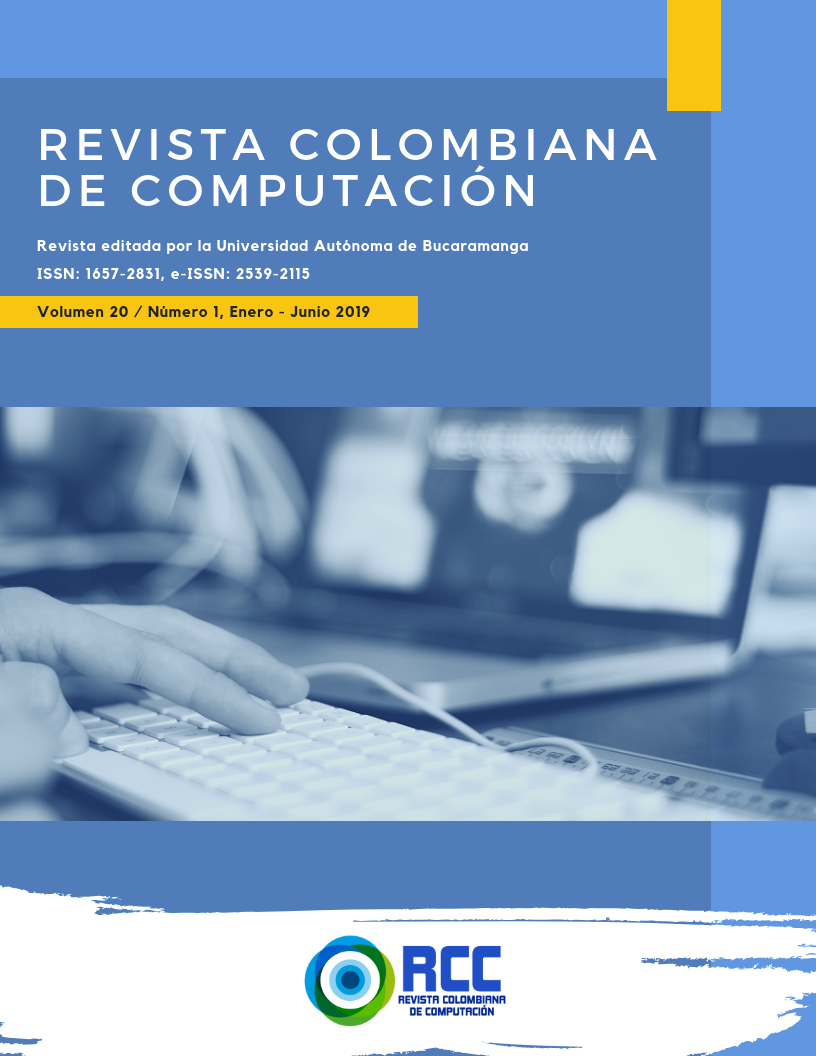Diamante digital, una apuesta territorial por el desarrollo a partir de las TIC
Resumen
Entre enero de 2014 y septiembre de 2015, se llevó a cabo la iniciativa Diamante Caribe y Santanderes: un ejercicio de planeación territorial conjunta entre los nueve departamentos que conforman las regiones colombianas de la costa norte del país y los santanderes. El resultado de este proyecto fue la definición de una visión integrada de crecimiento a partir de un diagnóstico sectorial, que comprende un portafolio de proyectos con impactos de diferente índole sobre la región. Uno de los sectores seleccionados para este estudio fue el de Plataformas Tecnológicas, el cual comprende sistemas de información y plataformas TI, instrumentación de ciudad, gobierno electrónico, salud, educación, instrumentación industrial. Este trabajo resume la experiencia del desarrollo de este estudio, y la visión final de una estrategia regional para las TIC denominada Diamante Digital. Además, se presentan algunos resultados complementarios y lecciones aprendidas del proceso.
Referencias bibliográficas
Albino, V., Berardi, U., & Dangelico, R. M. (2015). Smart Cities: Definitions, Dimensions, Performance, and Initiatives. Journal of Urban Technology, 22(1), 3–21. https://doi.org/10.1080/10630732.2014.942092
Deloitte Research. (2000). At the dawn of e-Government: the citizen as customer / Deloitte Research. - Version details - Trove. New York: Deloitte Consulting.
Department of Economic and Social Affairs. (2018). World Urbanization Prospects: The 2018 Revision. New York.
Division for Public Institutions and Digital Government. (2018). UN E-Government Survey 2018. New York.
Dutton, W. H., Blumler, J. G., & Kraemer, K. L. (1987). Wired cities: shaping the future of communications. Wired cities: shaping the future of communications. Washington Program, Annenberg School of Communications.
Fundación Metrópoli. (2013). Diamante Caribe y Santanderes de Colombia. Enfoque Conceptual, Metodología y Plan de Trabajo. Bogotá.
Grima-Izquierdo, C. (2010). A generic architecture for e-Government and e-Democracy: requirements, design and security risk analysis. Lap Lambert Academic Publ.
Hai, C., & Jeong, I. (2007). Fundamental of development administration. Scholar Press.
Harrison, C., & Donelly, A. (2011). A Theory of Smart Cities. In Proceedings of the 55th Annual Meeting of the ISSS (pp. 1–15). Hull, UK.
Hyang-Sook, C., Byung-Sun, C., & Woong-Hee, P. (2007). Ubiquitous-City Business Strategies: The Case of South Korea. In PICMET ’07 - 2007 Portland International Conference on Management of Engineering Technology (pp. 1147–1153). https://doi.org/10.1109/PICMET.2007.4349438
Ishida, T., & Isbister, K. (2000). Digital cities: technologies, experiences, and future perspectives. Springer.
Kaylor, C., Deshazo, R., & Van Eck, D. (2001). Gauging e-government: A report on implementing services among American cities. Government Information Quarterly, 18(4), 293–307. https://doi.org/10.1016/S0740-624X(01)00089-2
Komninos, N. (2002). Intelligent cities: innovation, knowledge systems, and digital spaces. Spon Press.
Leem, Y., Lee, S. H., & Yoon, J. (2014). Linking Data and Converging Systems for Smarter Urban Services: Two Cases of U-City Service in Korea. Procedia Environmental Sciences, 22, 89–100. https://doi.org/10.1016/j.proenv.2014.11.009
Marsal-Llacuna, M.-L., Colomer-Llinàs, J., & Meléndez-Frigola, J. (2015). Lessons in urban monitoring taken from sustainable and livable cities to better address the Smart Cities initiative. Technological Forecasting and Social Change, 90(90), 611–622. https://doi.org/10.1016/j.techfore.2014.01.012
Neirotti, P., De Marco, A., Corinna Cagliano, A., Mangano, G., & Scorrano, F. (2014). Current trends in Smart City initiatives: Some stylised facts. Cities, 38, 25–36. https://doi.org/10.1016/j.cities.2013.12.010
Rogers, R. G., & Gumuchdjian, P. (1997). Cities for a small planet. Faber and Faber.
Streitz, N. A. (2011). Smart Cities, Ambient Intelligence and Universal Access. In C. Stephanidis (Ed.), International Conference on Universal Access in Human-Computer Interaction (pp. 425–432). Berlin, Heidelberg: Springer Berlin Heidelberg. https://doi.org/10.1007/978-3-642-21666-4_47
Yin, C., Xiong, Z., Chen, H., Wang, J., Cooper, D., & Bertrand, D. (2015). A Literature Survey On Smart Cities. Science China Information Sciences, 58(10), 1–18. https://doi.org/10.1007/s11432-015-5397-4
Yovanof, G. S., & Hazapis, G. N. (2009). An Architectural Framework and Enabling Wireless Technologies for Digital Cities & Intelligent Urban Environments. Wireless Personal Communications, 49(3), 445–463. https://doi.org/10.1007/s11277-009-9693-4
Zygiaris, S. (2013). Smart City Reference Model: Assisting Planners to Conceptualize the Building of Smart City Innovation Ecosystems. Journal of the Knowledge Economy, 4(2), 217–231. https://doi.org/10.1007/s13132-012-0089-4













